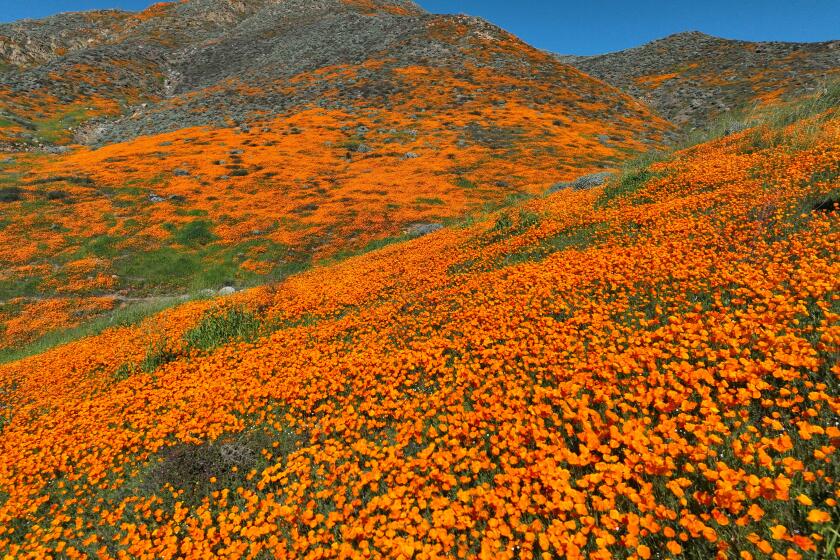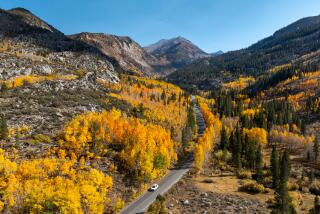California’s breathtaking superbloom is here. Mapping where to go, see amazing photos
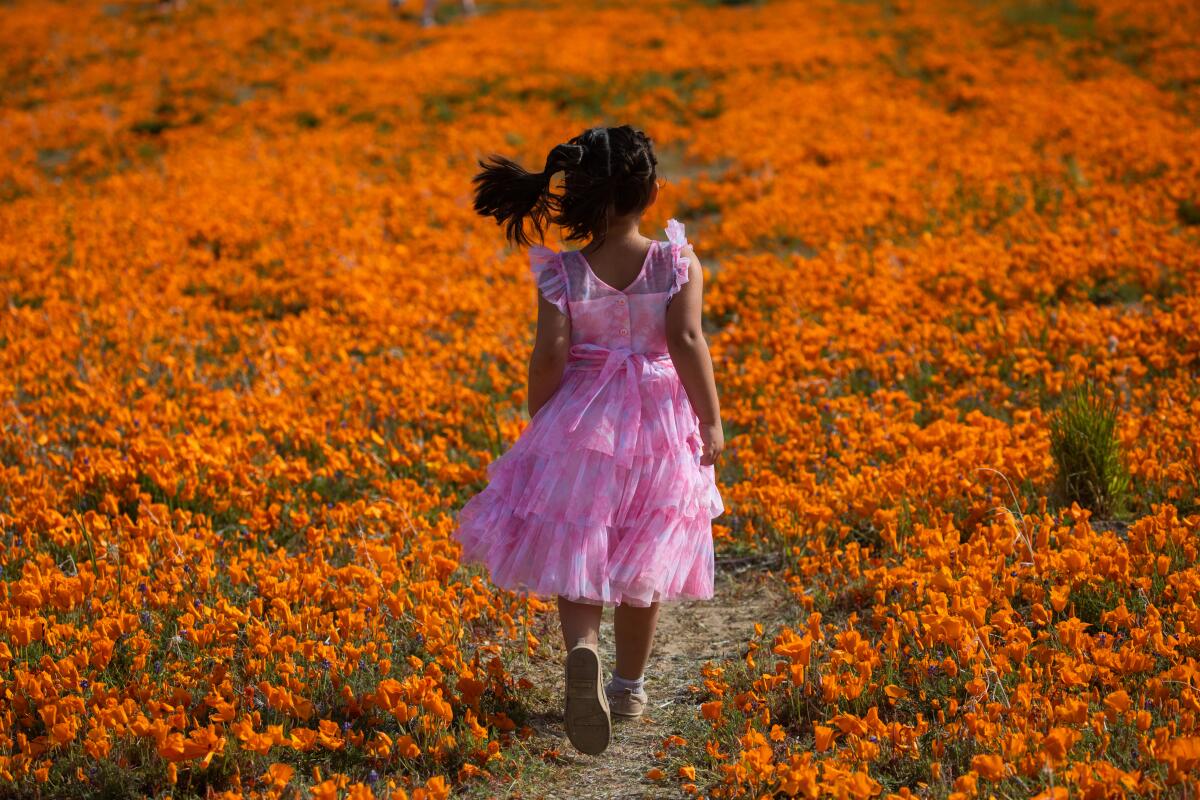
- Share via
The arrival of spring after an unusually wet winter brings with it a superbloom.
Some meccas for flower tourism, including Lake Elsinore with its golden poppies, were harmed enough by crowds in 2019 that visitors have been warned to stay away this year.
On the other hand, some naturalists think that closing parks to visitors defeats their purpose: to foster connection between residents and wildlife and encourage conservation.
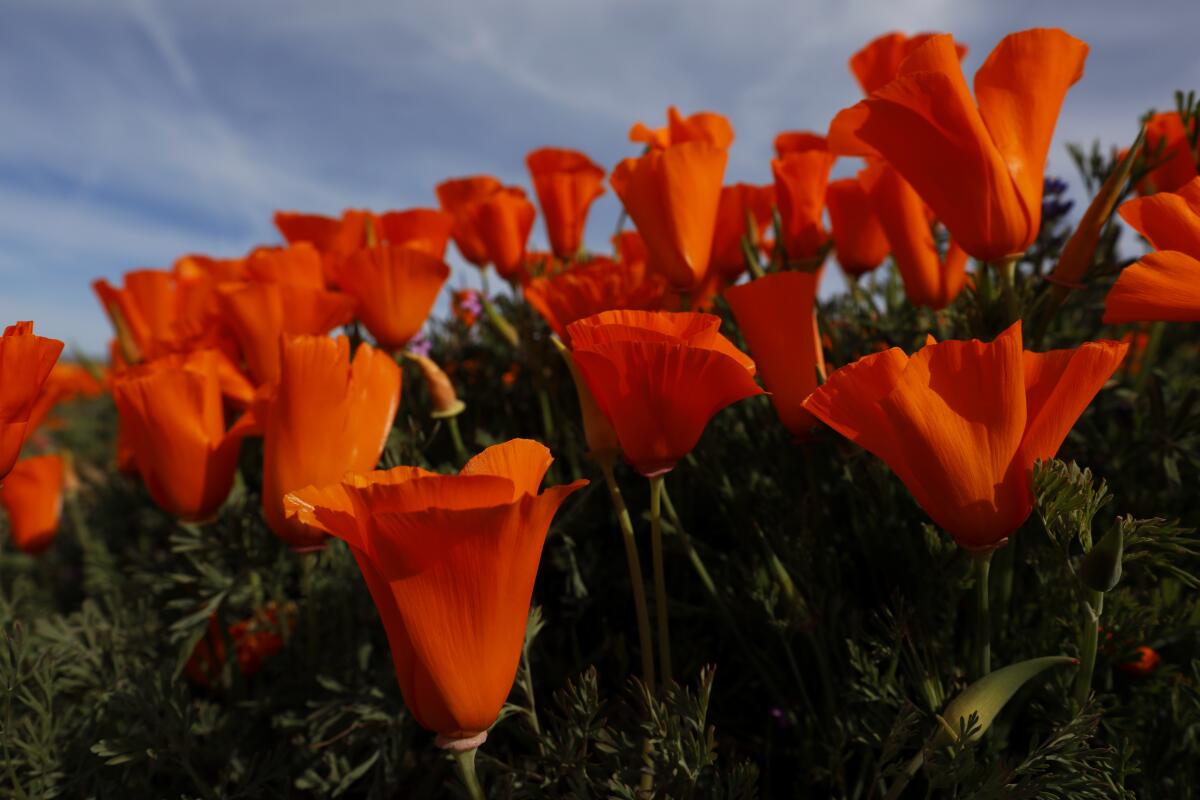
After an unprecedented series of winter storms, outdoor enthusiasts are expecting an unprecedented abundance of flowers.
There’s no scientific definition for what constitutes a superbloom, Daniel Winkler, a research ecologist with the U.S. Geological Survey, Southwest Biological Science Center, told The Times.
“The superbloom is really a cultural phenomenon, where people decide that there are enough flowers here, right now, that we’ll call it a superbloom,” Winkler said.
Joan Dudney, an assistant professor at the department of environmental studies at UC Santa Barbara, has ventured all over California to witness the superbloom.
The Theodore Payne Foundation’s annual Wild Flower Hotline returns March 3. Be respectful when you visit, but don’t be ashamed you want to see the bloom.
“It’s really hard as a naturalist to enjoy the places that are overrun with tourists and Instagram models and people that are not used to being out in these places,” Dudney said, adding that visitors are too often “out there for the spectacle” and “haven’t yet developed a connection with these natural spaces.”
As a first step for those seeking a deeper connection with the flora they see, she suggests downloading the Seek app by iNaturalist, which can identify plant species.
The California Department of Parks and Recreation recommends seven sites in Southern California where visitors can see the blooms, which have already arrived and, in many cases, are projected to continue for about a month. They are sorted by distance from downtown Los Angeles.
Chino Hills State Park: Guests are advised to look for flowers along Bane Road and the nearby Bane Ridge Trail at this park, the closest to Los Angeles on our list. “This year, the flowers that are blooming include canterbury and school bells, arroyo lupine, and California poppy,” the parks department said. 35 miles from downtown L.A.
Antelope Valley California Poppy Reserve: West of Lancaster, this hillside is home to the Poppy Cam.” The hillsides at the Poppy Reserve are starting to show vivid pinks from filaree and vibrant yellows from large swaths of goldfields,” the parks department said, and more poppies are expected to bloom in the coming weeks. The best spots: Antelope Trail North Loop and Kitanemuk Vista Point. 70 miles from downtown L.A.
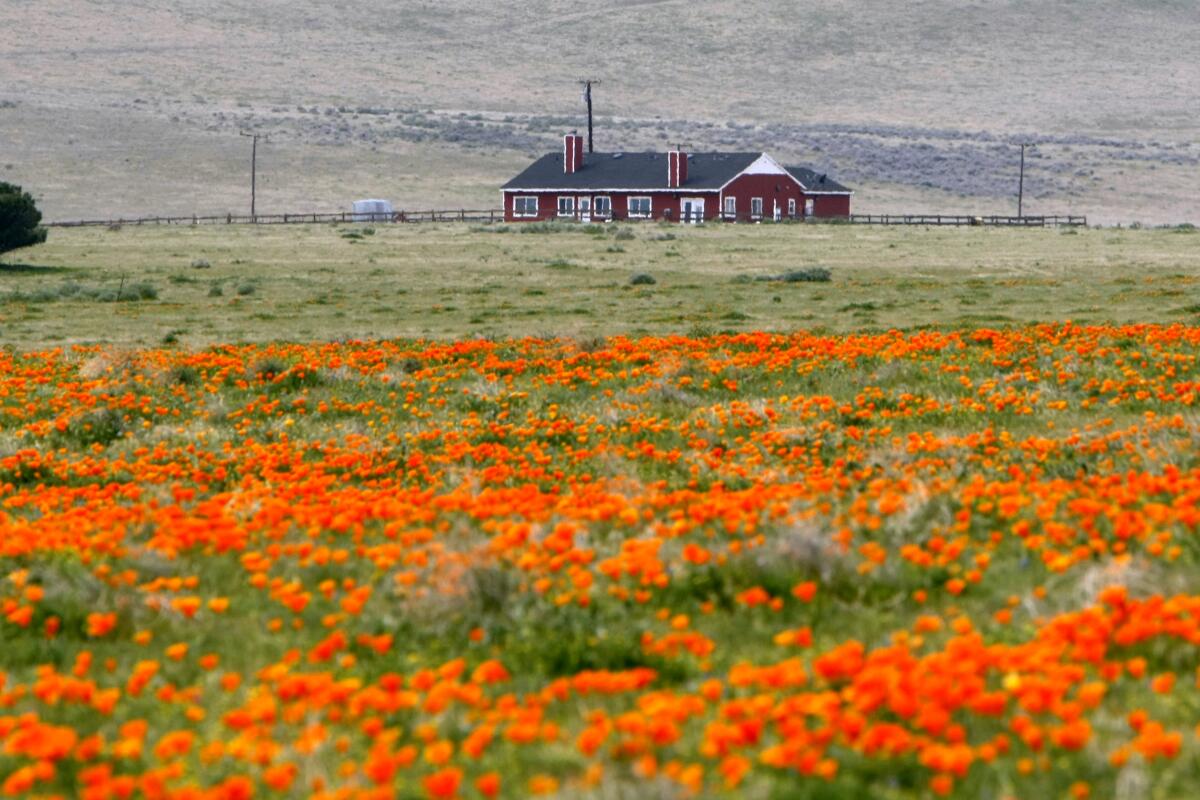
Eastern Kern County Onyx Ranch State Vehicular Recreation Area: East of Bakersfield. Over the next month, Jawbone Canyon will continue to bloom, featuring “lavender Lacy Phacelia and brilliant yellow desert dandelions,” per the parks department. 120 miles from downtown L.A.
Red Rock Canyon State Park: Also east of Bakersfield, the park’s Hagen Canyon, Iron Canyon — where four-wheel drive is recommended — and the area around the visitor center are in bloom for another month. Flowers include “desert dandelions, blue dicks, desert or wild parsley, and red maids,” according to the parks department, as well as blooming Joshua trees and bladderpod. 120 miles from downtown L.A.
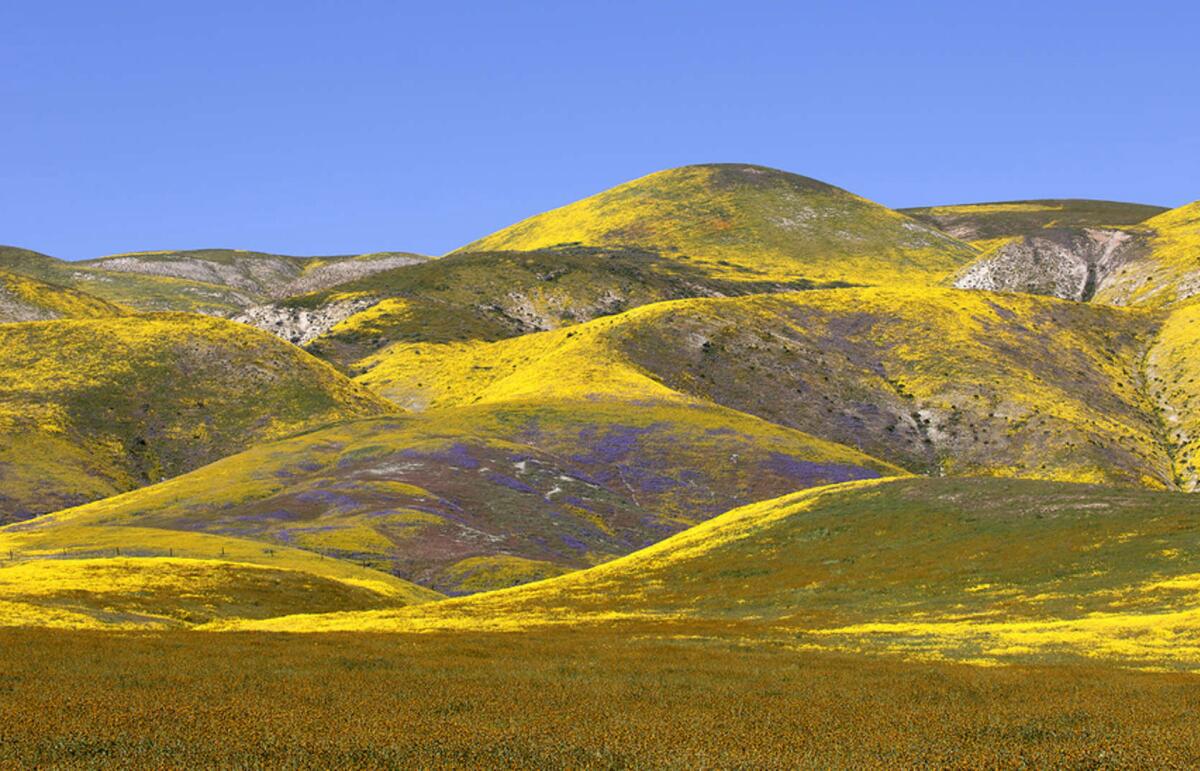
Tule Elk State Natural Reserve: Southwest of Bakersfield, the natural reserve currently features “large patches of goldfields and filaree blooming,” the parks department said. The tule elk there are also growing their antlers. 125 miles from downtown L.A.
Anza-Borrego Desert State Park: Located between San Diego and the Salton Sea, Anza-Borrego is the largest state park in California. “Visitors can see remaining sand verbena and desert sunflowers along the east side of Henderson Canyon Road in the northern end of the park and sand verbena at June Wash along S2 in the southern end of the park,” according to the Department of Parks and Recreation. 150 miles from downtown L.A.

Colonel Allensworth State Historic Park: Yellow goldfields at this park are in bloom and may last another month, according to the parks department. The park is northwest of Bakersfield. 160 miles from downtown L.A.
Times staff writer Nathan Solis contributed to this report.
More to Read
Sign up for Essential California
The most important California stories and recommendations in your inbox every morning.
You may occasionally receive promotional content from the Los Angeles Times.

